The so-called "Tunnel of Love" is in town Klevan, Rivne region, Ukraine. In the warm season, when dissolved in full force and effect on trees, green robe growing next to each other trees form a tunnel around the green fairy km section of the railway.
source The Tunnel of Love, Nice n Funny
Stunning Staircase Photos
arne jacobsen
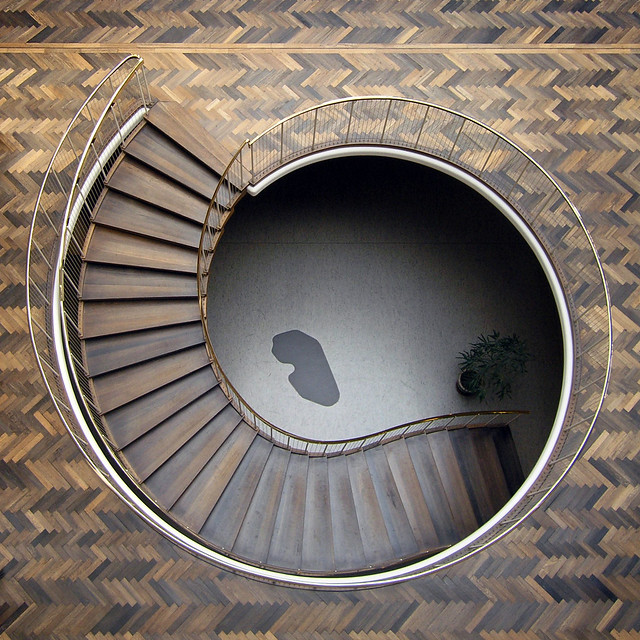
A Mirror on the Ceiling

leisure time

Enlightenment
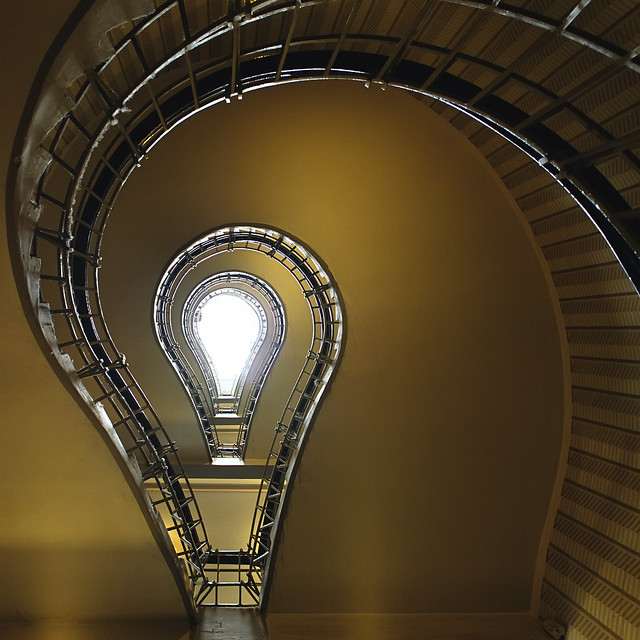
Alone

Dark clouds and a staircase
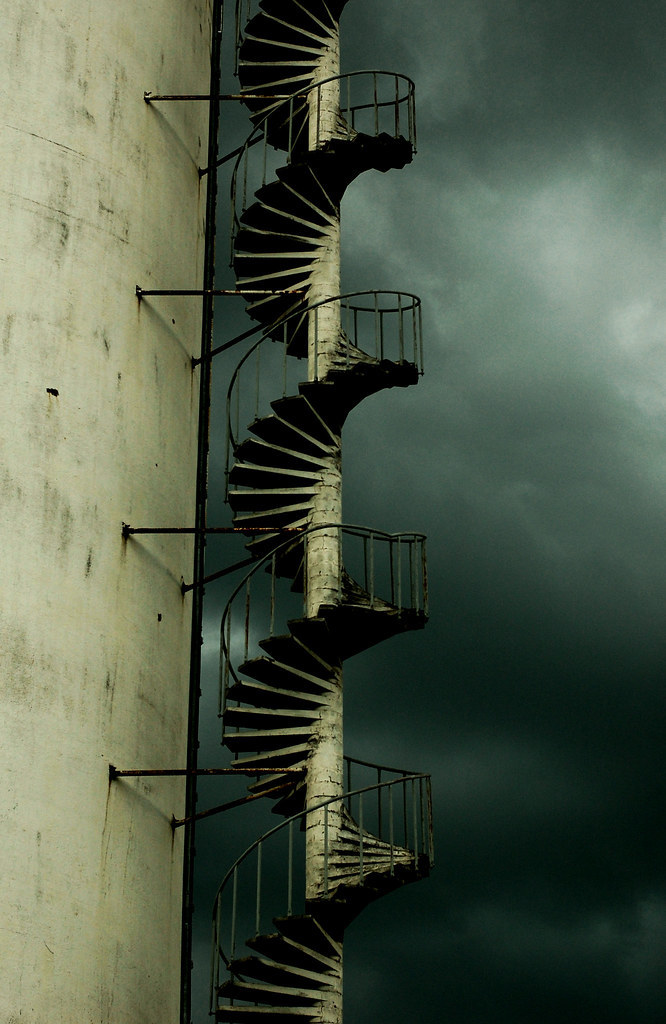
Green

I believe I can fly...

Interior Architecture of the Deutsches Museum II

Organ staircase Saint Mary's Studley Royal, Yorkshire UK

Reflection and Shadow - Spiral Staircase
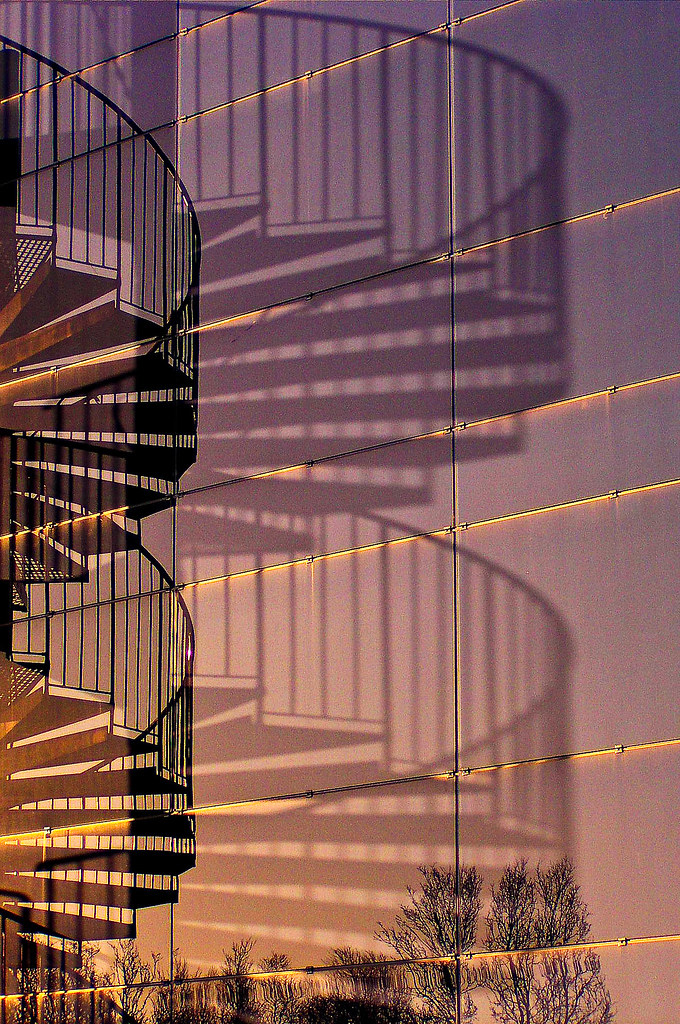
The Lobby stairs

Staircase
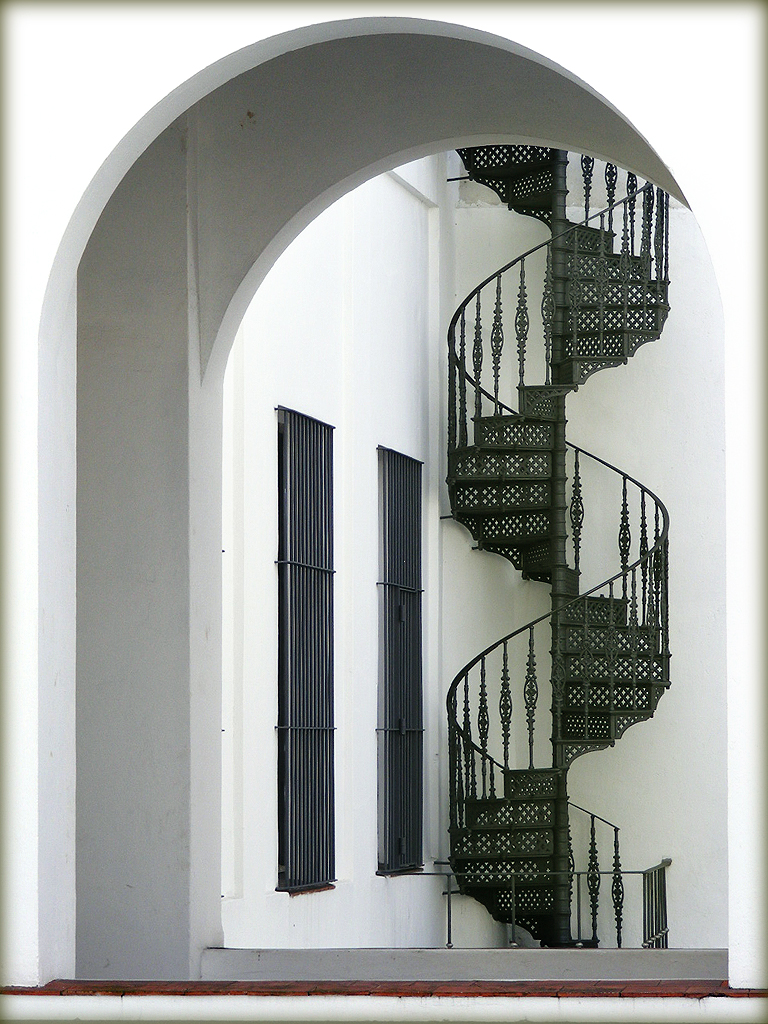
Black Madonna Stairs, Prague
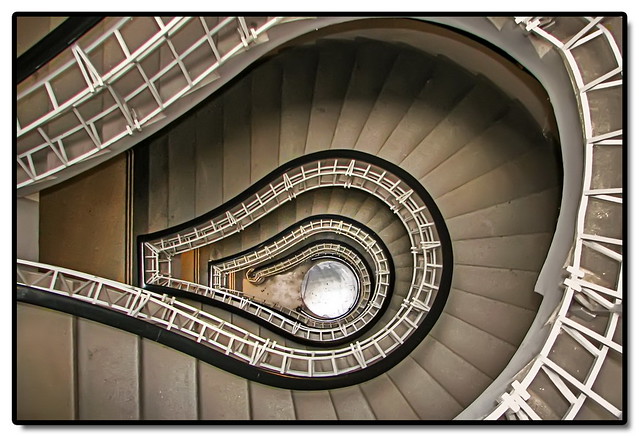
Steps

Nightcrawler

The colors of life

When a Girl goes Down the Staircase

6 Stunden Berlin | Niere/Ohr

Paranoid

Oyonnax revisited

-1

arne jacobsen, aarhus town hall 1937-1942
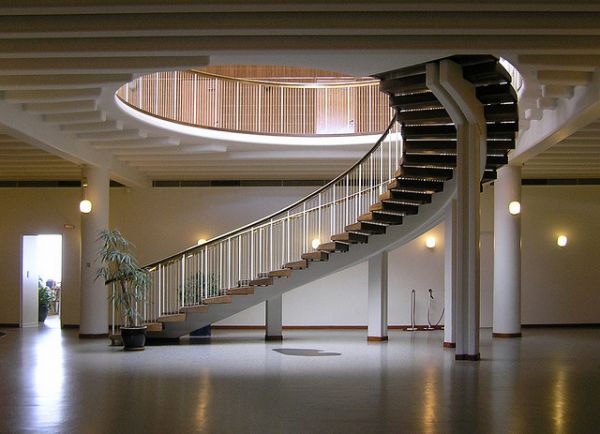
Spiral of Mind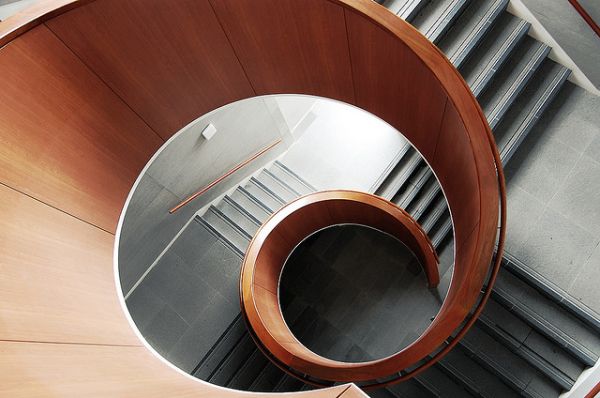
Abandoned Manor
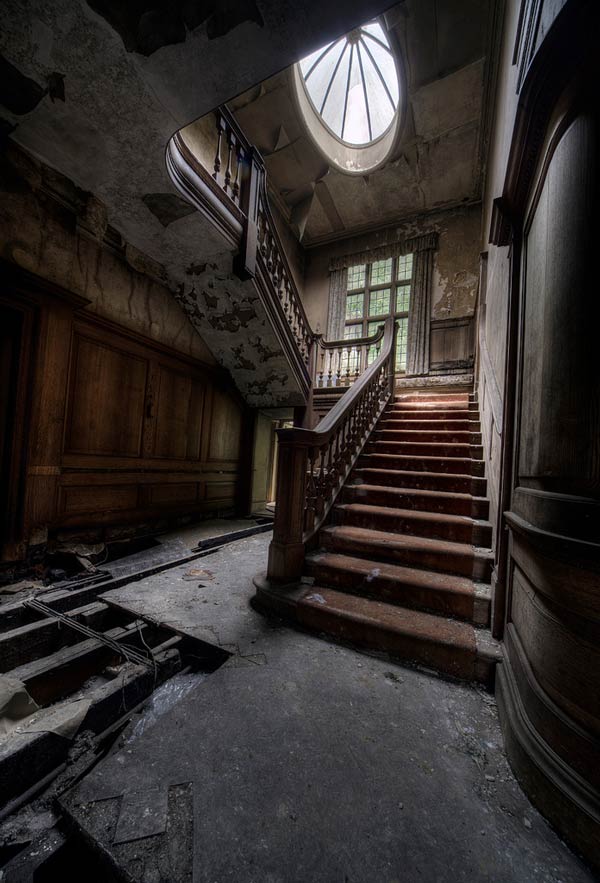
Spiral staircase

Case

Sydney Apple Store

Hypnosis

arne jacobsen, aarhus town hall 1937-1942
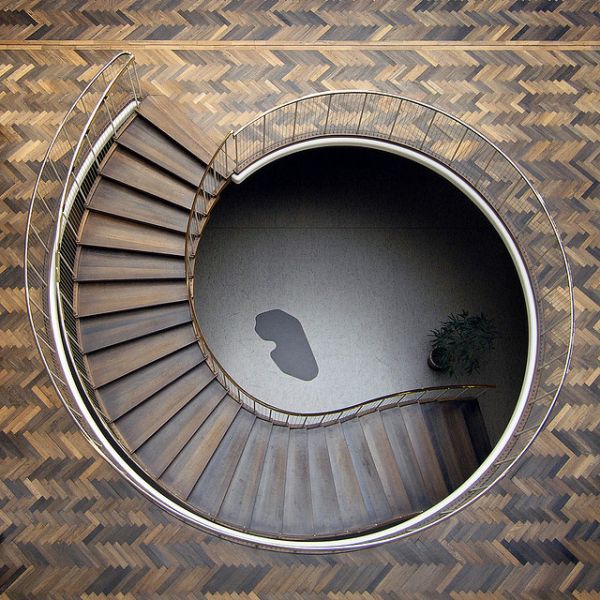
Banister
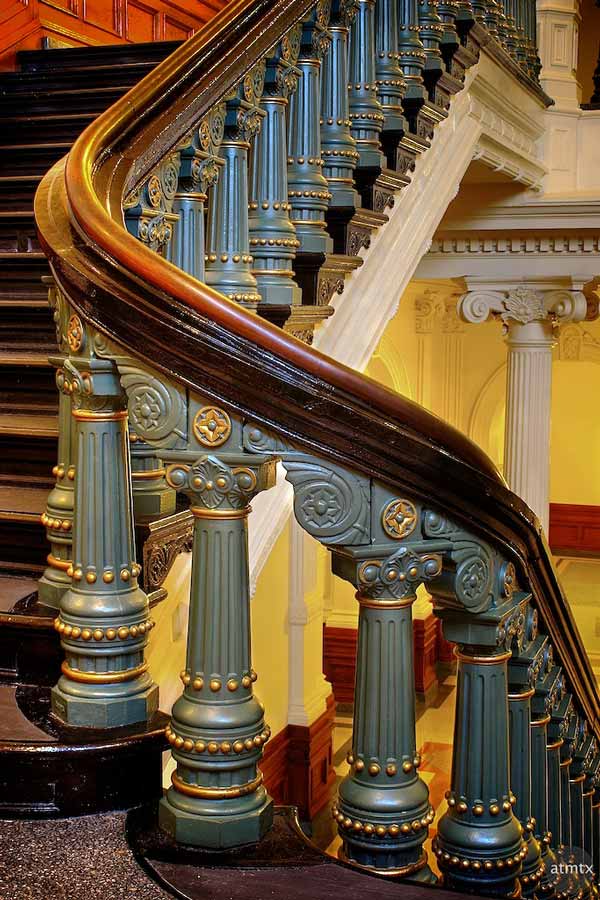
wishbone spiral

The Theorem of Thales / Thales' Theorem

stairways to? (Cc)

Uncomplicated

stairs
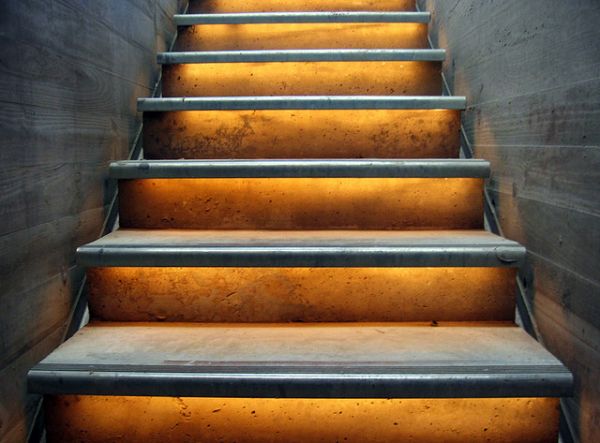
Glide Across the Lonely Years

I Could Only Stop and Stair!
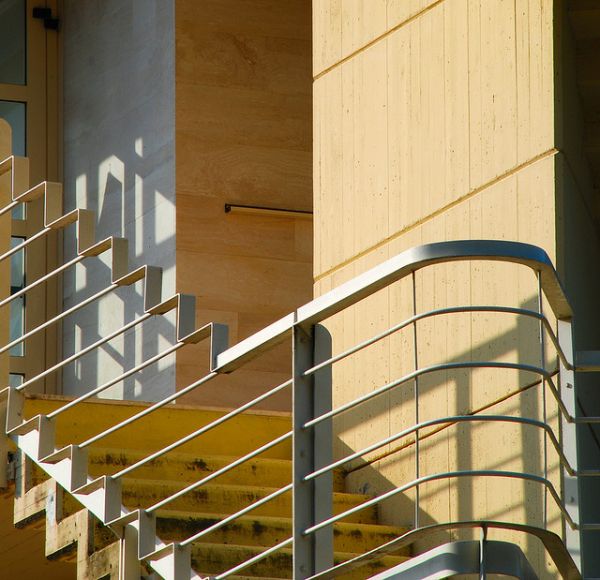
Beautiful decay10
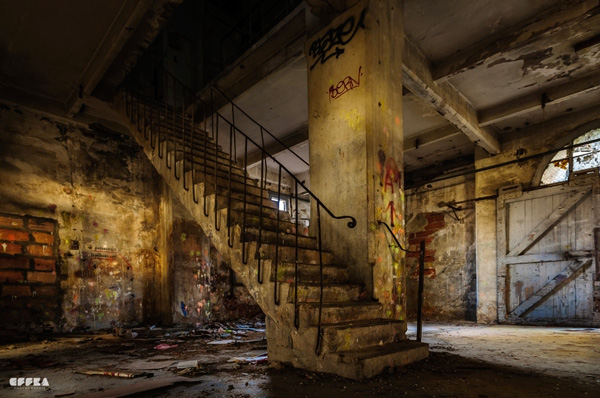

A Mirror on the Ceiling

leisure time

Enlightenment

Alone

Dark clouds and a staircase

Green

I believe I can fly...

Interior Architecture of the Deutsches Museum II

Organ staircase Saint Mary's Studley Royal, Yorkshire UK

Reflection and Shadow - Spiral Staircase

The Lobby stairs

Staircase

Black Madonna Stairs, Prague

Steps

Nightcrawler

The colors of life

When a Girl goes Down the Staircase

6 Stunden Berlin | Niere/Ohr

Paranoid

Oyonnax revisited

-1

arne jacobsen, aarhus town hall 1937-1942

Spiral of Mind

Abandoned Manor

Spiral staircase

Case

Sydney Apple Store

Hypnosis

arne jacobsen, aarhus town hall 1937-1942

Banister

wishbone spiral

The Theorem of Thales / Thales' Theorem

stairways to? (Cc)

Uncomplicated

stairs

Glide Across the Lonely Years

I Could Only Stop and Stair!

Beautiful decay10

National Geographic – 2010 best space photos
Photo taken in January, Bangkok, Thailand, a wonderful photo of the solar eclipse

Photo taken by Hubble Space Telescope
January,2010, Hawaii’s Haleakala Volcano
This photo of macula taken by the New Jersey Institute of Technology’s new solar telescope, announced in August.
Japan’s space probe returned to atmosphere on June 13
Satellite photo of Lake Ariel in South Australia
The photo taken by European Space Agency’s "Rosetta" spacecraft, showing the asteroid covered with craters


Photo taken by Hubble Space Telescope
January,2010, Hawaii’s Haleakala Volcano
This photo of macula taken by the New Jersey Institute of Technology’s new solar telescope, announced in August.
Japan’s space probe returned to atmosphere on June 13
Satellite photo of Lake Ariel in South Australia
The photo taken by European Space Agency’s "Rosetta" spacecraft, showing the asteroid covered with craters

Amazing Places Photos By National Geographic
15 Famous Living Trees
1. Teapot Baobab, Madagascar
In 1990 the Monterey Journal reported that Pebble Beach's lawyer, Kerry C. Smith, said "The image of the tree has been trademarked by us," and that it intended to control any display of the cypress for commercial purposes. The company had warned photographers that "they cannot even use existing pictures of the tree for commercial purposes."
 |
| link |
Teapot Baobab takes the form of bottle and also looks like teapot, which is why its name has teapot in it. This tree and the trees similar like this are located in Ifaty, Madagascar.
 |
| link |
The famed Teapot Baobab is around 1200 years old and has the capacity of storing more than 31,000 US gallons (117.000 litres) of water. It can show the endurance for severe drought conditions. [link]
2. Chandelier Tree, USA
 |
| link |
The Chandelier Tree in Drive Thru Tree Park is a 315 foot (96 metre) tall coast redwood tree in Leggett, California with a 6 ft (1.83 m) wide by 6 ft 9 inch (2.06 m) high hole cut through its base to allow a car to drive through.
 |
| link |
The Chandelier Tree is a giant redwood located 175 mi (280 km) north of San Francisco on US 101. The massive tree had the ignoble fate of having a tunnel carved through its base more than 60 years ago and is now the centerpiece of a 200-acre grove of redwoods.
 |
| link |
For $3, you can drive your car through the tree - unless you are driving a Winnebago (a type of recreational vehicle) - and set up a picnic at its base. [link1, link2, map]
3. Boab Prison Tree, Australia
 |
| link |
The Boab Prison Tree is a large hollow Adansonia gregorii (Boab) tree just south of Derby, Western Australia. It is reputed to have been used in the 1890s as a lockup for Indigenous Australian prisoners on their way to Derby for sentencing.
 |
| link |
It is now a tourist attraction. In recent years a fence was erected around the tree to protect it from vandalism. [link, map]
4. Cotton Tree, Sierra Leone
 |
| link |
The Cotton Tree is a Ceiba pentandra (tropical tree), a historic symbol of Freetown, the capital city of Sierra Leone. According to legend, the "Cotton Tree" gained importance in 1792 when a group of former African American slaves, who had gained their freedom by fighting for the British during the American War of Independence, settled the site of modern Freetown.
 |
| link |
According to tradition, they landed on the shoreline and walked up to a giant tree just above the bay and held a thanksgiving service there, gathering around the tree in a large group and praying and singing hymns to thank God for their deliverance to a free land.
 |
| link |
Today, a huge Cotton Tree stands in the oldest part of Freetown near the Supreme Court building, music club building and the National Museum. Sierra Leonians believe that this very tree was where the Nova Scotian settlers prayed more than two hundreds years ago, and they regard it as the symbol of their capital city. Its exact age is unknown, but it is known to have existed in 1787. [link, map]
5. Lone Cypress Tree, USA
 |
| link |
Chief among the scenic attractions at 17-Mile Drive (California) is the Lone Cypress Tree, a salt-pruned Monterey cypress (macrocarpa) tree which is the official symbol of Pebble Beach and a frequent fixture of television broadcasts from this area.
 |
| link |
 |
| link |
6. Chêne Chapelle, France
 |
| link |
 |
| link |
 |
| link |
 |
| link |
7. Sunland Baobab, South Africa
 |
| link |
 |
| link |
 |
| The narrow entrance to the bar link |
 |
| link |
8. Bartek, Poland
 |
| link |
 |
| link |
 |
| Polish Prime Minister Donald Tusk on an official visit to Bartek link |
9. Basket Tree, USA
 |
| link |
 |
| link |
10. Árbol del Tule, Mexico
 |
| link |
 |
| link |
 |
| link |
11. The Great Banyan, India
 |
| link |
 |
| link |
 |
| link |
 |
| link |
12. Angel Oak, USA
 |
| link |
 |
| link |
 |
| link |
 |
| link |
13. Dragon Tree at Icod, Spain
 |
| link |
14. Gloucester Tree, Australia
 |
| link |
 |
| link |
 |
| View from lookout cabin link |
15. Ying Ke Pine, China
 |
| link |
 |
| link |
10 Beautiful Tree Tunnels
Photo — Link
Each spring, a peaceful street, located in the German city of Bonn, transforms into an enchanting cherry blossom tunnel. Photographer Marcel Bednarz captured this stunning sight of cherry blossoms in full bloom. He explained to me that there are actually two streets in Bonn where cherry trees are planted, but the one you see in the above picture is called Heerstraße. As you may know, the average cherry blossom lasts only between 7 and 10 days, depending on weather conditions.
09. Rua Gonçalo de Carvalho, Brasil
Number nine goes to Brazil’s green tunnel from Porto Alegre, Rua Gonçalo de Carvalho. According to a decree signed in 2006 by former mayor Joseph Fogaça, this beautiful street is part of the country’s historical, cultural, ecological and environmental heritage.
There are more than one hundred towering Tipuana (Rosewood) trees along Rua Gonçalo de Carvalho. The great shade trees stretch over three city blocks, which is a good thing for the city’s overall health. Did you know that trees, properly planted around buildings, can reduce air conditioning demands by up to 30%?
08. Autumn Tree Tunnel, USA
Photo — Link
Photographed in glorious autumn colors by Kevin McNeal, this tree tunnel is simply astonishing! The picture was taken on the way up to Smuggler’s Notch, a Vermont state park.
The eye-catching foliage starts changing its color in the northern region, in response to many environmental factors, and spreads south as the fall season advances.
07. Ginkgo Tree Tunnel, Japan
Gingko biloba is a highly venerated tree in Japanese culture. Six ginkgo trees survived the Hiroshima bombing, continuing to grow despite facing so many challenges, and are still alive today. Therefore, the Japanese regard the gingko as “the bearer of hope”. It is also known as “the survivor” or “the living fossil.”
Around 65,000 ginkgoes grace Tokyo’s streets, gardens and parks today. According to some people who visited Tokyo, the tunnel you see in the above picture is located in the outer garden of Meiji Shrine.
06. Yew Tree Tunnel, UK
The medieval Aberglasney House features one of the most beautiful gardens in Wales, UK. They have been an inspiration to writers since 1470. The Yew Tunnel is a popular tourist attraction in this area. Believe it or not, it took nine years of pruning to restore this unique archway. “Years of neglect had left it unsafe and with a perilous future, as the once formally clipped structure had grown even higher than the top of the Mansion itself. It is so nice to see it looking invigorated and healthy again, I had every confidence that with careful restoration it would help its future longevity, but I have to confess that it did look drastic at the time,” declared Graham Rankin, one of Aberglasney’s directors.
The Yew Tunnel is thought to have been planted by the Dyer family of Aberglasney, during the 18th century.
source 10 Beautiful Tree Tunnels , Nice n Funny
05. The Dark Hedges, Northern Ireland
Photo — Link
Tucked away in the county of Antrim, these beautiful beech trees are thought to be around 300 years old. According to local records, James Stuart planted the 150 beech trees in the 18th century, to impress guests as they approached his splendid property, Gracehill House.
Legend tells that the spirit of a maid, who lived in a neighboring mansion and died in mysterious circumstances hundreds of years ago, haunts the country road. “Grey Lady” silently floats along the road and quickly disappears as she reaches the last beech tree.
04. Bamboo Path, Japan
The Sagano Bamboo Forest is located in Arashiyama, a nationally-designated historic site. The pathway you see in the above picture is 500m long, and runs through one of Japan’s most beautiful bamboo forests. No wonder the Agency for Cultural Affairs declared Arashiyama a “Place of Scenic Beauty”. This forest is close to many famous temple and shrines, including the Adashino Nenbutsu-ji Temple.
The sound the wind makes, as it blows through the tall bamboo trees, has been voted by the Japanese authorities as one of 100 must-preserve sounds of Japan.
03. Tunnel of Love, Ukraine
The Ukrainian Tunnel of Love is actually a two-mile sector of private railway that serves a woodworking plant near Klevan, a small city located in western Ukraine. I read somewhere that couples pass through this romantic tunnel to make a wish. The myth goes that, if their love is strong and pure, the wish will come true.
May all of your wishes come true, but watch out for the train! It runs three times a day through the leafy tunnel.
02. Jacarandas Walk, South Africa
Over 10 million trees keep South Africa’s largest city green. According to several unofficial sources, Johannesburg is home to the world’s largest man-made forest.
There are at least 49 species of Jacaranda, most of them native to South America (particularly in Uruguay, Brazil, Peru & Argentina), and the Caribbean basin. The tropical trees were imported to South Africa over one hundred years ago.
October is the month when the flowers of thousands of Jacaranda trees are in full blossom. This spectacular tree tunnel is located either in Johannesburg or Pretoria, the Jacaranda City where 70,000+ Jacarandas add vivid splashes of purple-blue to the urban landscape.
01. Wisteria Tunnel, Japan
As soon as the cherry blossom season ends, the gorgeous Wisteria flowers, that hang in grape-like clusters, take their turn on the Japanese floral calendar. The Fuji Matsuri, or Wisteria Festival, is celebrated each spring in Tokyo, Shizuoka, and Okazaki.
The Ashikaga Flower Park is one of the best places to admire different varieties of wisteria, including double-petaled wisteria, giant wisteria and yellow, white, light pink or purple variants of wisteria.
A Thousand Year Old Baobab Tree
Photo — Link
Spotted in the Ifaty reserve, north of Tulear in southwestern Madagascar is this incredible Baobab tree that is purportedly a thousand years old. Adansonia za, common name Baobab, is a species of flowering plant in the genus Adansonia belonging to the Bombacaceae family.
It’s a large thick-stemmed deciduous tree, about 10–40 meters (33–130 ft) high and about 6 meters (20 ft) in diameter. The trunk and branches have a brownish-rose colored hue. The tree is wide at the base and grows to a narrow point towards the top of the tree.
Baobab or Upside-Down Tree grows in Africa and Australia. The legend says that after it was planted by God it kept moving, so God replanted it upside down. These trees can reach heights of 5 to 30 metres (16 to 98 ft) and have trunk diameters of 7 to 11 metres (23 to 36 ft). The cork-like bark is fire resistant and is used for cloth and rope. The leaves are used for condiments and medicines. The fruit, called "monkey bread", is rich in vitamin C and is eaten. The tree is capable of storing hundreds of litres of water, which is tapped in dry periods.
Mature trees are frequently hollow, providing living space for numerous animals and humans alike. Trees are even used as bars, barns and more. The Baobab also features as the Tree of Life in Disney's "Lion King", and is the centrepiece in Disney's Animal Kingdom.
source A Thousand Year Old Baobab Tree , Nice n Funny
Photo — Link
Spotted in the Ifaty reserve, north of Tulear in southwestern Madagascar is this incredible Baobab tree that is purportedly a thousand years old. Adansonia za, common name Baobab, is a species of flowering plant in the genus Adansonia belonging to the Bombacaceae family.
It’s a large thick-stemmed deciduous tree, about 10–40 meters (33–130 ft) high and about 6 meters (20 ft) in diameter. The trunk and branches have a brownish-rose colored hue. The tree is wide at the base and grows to a narrow point towards the top of the tree.
Baobab or Upside-Down Tree grows in Africa and Australia. The legend says that after it was planted by God it kept moving, so God replanted it upside down. These trees can reach heights of 5 to 30 metres (16 to 98 ft) and have trunk diameters of 7 to 11 metres (23 to 36 ft). The cork-like bark is fire resistant and is used for cloth and rope. The leaves are used for condiments and medicines. The fruit, called "monkey bread", is rich in vitamin C and is eaten. The tree is capable of storing hundreds of litres of water, which is tapped in dry periods.
Mature trees are frequently hollow, providing living space for numerous animals and humans alike. Trees are even used as bars, barns and more. The Baobab also features as the Tree of Life in Disney's "Lion King", and is the centrepiece in Disney's Animal Kingdom.
The Longest Tree Top Walk in the World





source The Longest Tree Top Walk in the World, Nice n Funny
At 144 feet high, the longest tree top walk on the planet resides at the Bavarian Forest National Park in Neuschonau, Germany. The walk is intended for any nature lovers who are feeling adventurous. The path is actually 1,300 meters long (0.8 miles), and it culminates with a 44 meter high tree tower that is built around and above 3 giant, old 38 meter fir trees.







source The Longest Tree Top Walk in the World, Nice n Funny
World's Smallest Tree Species
If you are looking for a way to bring nature indoors, you definitely need to look into getting a bonsai tree. Bonsai trees are beautiful and add a refreshing feel to a room. They are fun to take care of and they even make great gifts.
It is believed that growing bonsai trees first start during the Han Dynasty (206 BC~220 AD) in China. Later on it came to Japan where the art of bonsai tree growing was perfected. Bonsai tree growing is nature captured in miniature, thus, the small trees in pots.
A bonsai tree has a unique beauty. It is almost like you take your favorite tree that you enjoy sitting under and shrink it down small enough to set on your table. By growing your own or shopping for the perfect bonsai tree, you can find one that reminds you of your favorite tree that you grew up enjoying. Now take a look at some of the photos of different kind of Bonsai Trees...
source World's Smallest Tree Species, Nice n Funny
World's Longest Bridges
10. Seven Mile Bridge
The Seven Mile Bridge, in the Florida Keys, runs over a channel between the Gulf of Mexico and the Florida Strait, connecting Key Vaca (the location of the city of Marathon, Florida) in the Middle Keys to Little Duck Key in the Lower Keys. Among the longest bridges in existence when it was built, it is one of the many bridges on US 1 in the Keys, where the road is called the Overseas Highway.
9. San Mateo-Hayward Bridge
The San Mateo-Hayward Bridge is a bridge crossing Californias San Francisco Bay in the United States, linking the San Francisco Peninsula with the East Bay. More specifically, the bridges western end is in Foster City, the most recent urban addition to the eastern edge of San Mateo. The eastern end of the bridge is in Hayward. The bridge is owned by the state of California, and is maintained by Caltrans, the state highway agency.
8. Confederation Bridge
The Confederation Bridge is a bridge spanning the Abegweit Passage of Northumberland Strait, linking Prince Edward Island with mainland New Brunswick, Canada. It was commonly referred to as the Fixed Link by residents of Prince Edward Island prior to its official naming. Construction took place from the fall of 1993 to the spring of 1997, costing $1.3 billion. The 12.9-kilometre (8 mi) long bridge opened on 31 May 1997.
7. Rio-Niteroi Bridge
The Rio-Niteroi Bridge is a reinforced concrete structure that connects the cities of Rio de Janeiro and Niteroi in Brazil. Construction began symbolically on August 23, 1968, in the presence of Queen Elizabeth II of the United Kingdom and Prince Philip, Duke of Edinburgh, in their first and thus far only visit to Brazil. Actual work begun in January, 1969, and it opened on March 4, 1974. Its official name is President Costa e Silva Bridge, in honor of the Brazilian president who ordered its construction. Rio-Niteroi started as a descriptive nickname that soon became better known than the official name. Today, hardly anyone refers to it by its official name.
6. Penang Bridge
The Penang Bridge is a dual-carriageway toll bridge that connects Gelugor on the island of Penang and Seberang Prai on the mainland of Malaysia on the Malay Peninsula. The bridge is also linked to the North-South Expressway in Prai and Jelutong Expressway in Penang. It was officially opened to traffic on September 14, 1985. The total length of the bridge is 13.5 km (8.4 miles), making it among the longest bridges in the world, the longest bridge in the country as well as a national landmark.
5. Vasco da Gama Bridge
The Vasco da Gama Bridge is a cable-stayed bridge flanked by viaducts and roads that spans the Tagus River near Lisbon, capital of Portugal. It is the longest bridge in Europe (including viaducts), with a total length of 17.2 km (10.7 mi), including 0.829 km (0.5 mi) for the main bridge, 11.5 km (7.1 mi) in viaducts, and 4.8 km (3.0 mi) in dedicated access roads. Its purpose is to alleviate the congestion on Lisbons other bridge (25 de Abril Bridge), and to join previously unconnected motorways radiating from Lisbon.
4. Chesapeake Bay Bridge
The Chesapeake Bay Bridge (commonly known as the Bay Bridge) is a major dual-span bridge in the U.S. state of Maryland; spanning the Chesapeake Bay, it connects the states Eastern and Western Shore regions. At 4.3 miles (7 km) in length, the original span was the worlds longest continuous over-water steel structure when it opened in 1952. The bridge is officially named the William Preston Lane, Jr. Memorial Bridge after William Preston Lane, Jr. who, as governor of Maryland, implemented its construction.
3. King Fahd Causeway
The King Fahd Causeway is multiple dike - bridge combination connecting Khobar, Saudi Arabia, and the island nation of Bahrain. A construction agreement signed on July 8, 1981 led to construction beginning the next year. The cornerstone was laid on November 11, 1982 by King Fahd of Saudi Arabia and Sheikh Isa bin Salman al-Khalifa of Bahrain; construction continued until 1986, when the combination of several bridges and dams were completed. The causeway officially opened for use on November 25, 1986.
2. Lake Pontchartrain Causeway
The Lake Pontchartrain Causeway, or the Causeway, consists of two parallel bridges that are one of the longest bridges in the world by total length. These parallel bridges cross Lake Pontchartrain in southern Louisiana. The longer of the two bridges is 23.87 miles (38.42 km) long. The bridges are supported by over 9,000 concrete pilings. The two bridges feature bascule spans over the navigation channel 8 miles (13 km) south of the north shore. The southern terminus of the Causeway is in Metairie, Louisiana, a suburb of New Orleans. The northern terminus is at Mandeville, Louisiana.
1. Danyang–Kunshan Grand Bridge
The Danyang–Kunshan Grand Bridge is the world's longest bridge. It is a 164.8 kilometres (102.4 mi) long viaduct on the Beijing–Shanghai High-Speed Railway. The bridge is located between Shanghai and Nanjing in East China’s Jiangsu province. It includes a 9-kilometre long (5.6 mi) section over water that crosses Yangcheng Lake in Suzhou. It is located in the Yangtze River Delta where the geography is characterized by lowland rice paddies, rivers and lakes. The bridge runs roughly parallel and ten or so miles to the south of the Yangtze River. It was completed in 2010 and opened in 2011. Employing 10,000 people, construction took four years and cost about $8.5 billion. Danyang–Kunshan Grand Bridge currently holds the Guinness World Record for the longest bridge in the world in any category as of June 2011.
Amazing Inhabited Bridges
1. Ponte Vecchio, Italy
The Ponte Vecchio is the oldest bridge in Florence. It is believed that a bridge already existed here during the Roman times. Its current appearance dates back to 1345 when it was built to replace a bridge which was destroyed by a flood. Houses were built on the bridge, a common practice in large European cities during the Middle Ages.
The houses on the bridge were initially used as workshops and a diverse array of shopkeepers such as butchers and tanners did business here. In 1593 duke Ferdinand I decided to replace them with goldsmiths, reportedly because the shops produced too much garbage and caused a foul stench.
Today the houses are used as shops selling a wide assortment of jewelry, ranging from affordable modern jewels to pricey antiques. [link, map]
2. Krämerbrücke, Germany
The Krämerbrücke is a bridge in the Thuringian city of Erfurt in Germany which is covered with inhabited, half timbered buildings on both sides. It is unique in Europe north of the Alps. The footbridge spans the Breitstrom, a branch of Gera River, connecting Benediktsplatz and Wenigemarkt.
Currently mostly artisans and antique shops can be found in the 32 houses on Krämer Bridge. Except for the houses numbered 15, 20, 24 and 33, all houses are municipal property. The building was and is a touristic highlight and a must-see.
The municipal administration maintains a foundation for the conservation of this unique historical monument, the Krämerbrücke Foundation. The greatest city festival of Erfurt is named after the bridge: Krämerbrückenfest. It is held around the bridge and in the old town annually in June. [link, map]
3. Pont de Rohan, France
Pont de Rohan is inhabited bridge in Landerneau in north-western France. This bridge spans the river Élorn. Since 1336, when it was built, it was restored in 1510 by Jean II de Rohan (nobleman from 15th-century). Originally contained two stores, a mill and a prison.
 |
| link |
 |
| link |
 |
| link |
2. Krämerbrücke, Germany
 |
| link |
 |
| link |
 |
| link |
3. Pont de Rohan, France
 |
| link |
source Amazing Inhabited Bridges, Nice n Funny
 |
| link |
4. Covered Bridge, Bulgaria
 |
| link |
 |
| link |
 |
| The interior of the bridge link |
5. Pont des Marchands, France
 |
| link |
 |
| link |
6. Pulteney Bridge, UK
 |
| link |
 |
| link |
7. Frome Town Bridge, UK
 |
| link |
Bonus 1: Bridge House, UK
 |
| link |
 |
| link |
Bonus 2: The Old Mill, France
 |
| link |
 |
| link |
The Highest, Tallest, Longest And Oldest Bridges In The World
The Si Du River Bridge (also known as the Siduhe Bridge), spanning a deep river gorge near Yesanguan, Badong County, Hubei Province, China, is the highest bridge in the world, at 1,627 feet (496m). The main span of the bridge is 2,952 feet long (900m).
The newly-completed Baluarte Bridge is the highest cable-stayed bridge in the world, connecting the north-western Mexican state of Sinaloa with Durango and Mazatlan. At 1,124 metres long (3,687 feet) and hanging at over 400 metres high (1,312 feet), the Baluarte Bridge is part of Mexico's elaborate bicentennial celebrations to mark its independence from Spain in 1810.
The Royal Gorge Bridge over the Arkansas River near Cañon City, Colorado, USA, held the record of highest bridge in the world from 1929 until 2003, at 955 feet (291m) with a main span of 938 feet (286m)
The tallest bridge in the world is the Millau Bridge in France. This stunning cable stayed vehicular bridge has one mast reaching a height of 1,125ft. The bridge crosses the valley of the river Tarn near Millau and on cloudy days the bridge appears to almost float on the clouds. It was designed by the English architect Lord Norman Foster, cost £272 million and was entirely privately financed. French President Jacques Chirac called the bridge ‘a miracle of equilibrium’.
China opened the world’s longest sea bridge, a 26.4 mile-long structure that could easily span the English Channel. Stretching across the wide blue waters of Jiaozhou bay, the vast Y-shaped bridge connects the booming Northern port city of Qingdao with an airport built on a nearby island and the industrial suburb of Huangdao. Built in just four years at a cost reported by the Chinese state media as £1.42 billion, the bridge stands on 5,200 pillars. A staggering 450,000 tons of steel was used in the construction, enough for almost 65 Eiffel Towers, and 2.3 million cubic metres of concrete.
The world's longest bridge outside of Asia is the Lake Pontchartrain Causeway in southern Louisiana, United States. At nearly 24 miles (38km) long, it is the seventh longest bridge in the world.
source The Highest, Tallest, Longest And Oldest Bridges In The World, Nice n Funny
The longest bridge in the southern hemishpere is the Rio-Niterói Bridge which connects the cities of Rio de Janeiro and Niterói in Brazil. It is 8.25 miles (13,290 m) long.
The Vasco da Gama Bridge is the longest bridge in Europe (including viaducts) at 10.7 miles (17.2 km). It is a cable-stayed bridge flanked by viaducts that spans the Tagus River near Lisbon, Portugal. It is the ninth longest in the world
The longest single-span suspension bridge in the UK is the Humber Estuary bridge. It was completed in 1981 at a length of 1,410 metres and at the time of construction, it was the longest bridge in the world
However, the longest British bridge in its entirety is the Second Severn Crossing, which has a length of roughly 3.2 miles, over twice as long as the Humber Bridge. The Second Severn Crossing carries the M4 motorway over the River Severn between England and Wales. Inaugurated on June 5, 1996 by HRH The Prince of Wales it was built to augment the traffic capacity of the original Severn Bridge built in 1966
The Sutong Yangtze River Bridge is a cable-stayed bridge with the longest main span in the world (1,088 metres (3,570 ft). It spans the Yangtze River in China between Nantong and Changshu
The oldest bridge in the world is the Pons Fabricius or Ponte dei Quattro Capi in Rome, Italy, which was built in 62 BC
Great Belt Bridge
The Great Belt is a Bridge between the Danish islands of Zealand and Funen across the Great Belt. It consists of a road suspension bridge and railway tunnel between Zealand and the island Sprogø, as well as a box girder bridge between Sprogø and Funen. The "Great Belt Bridge" (Danish: Storebæltsbroen) commonly refers to the suspension bridge, although it may also be used to mean the beam bridge or the link in its entirety. The suspension bridge, known as the East Bridge, has the world's third longest main span (1.6 km), and the longest outside of Asia.
source Great Belt Bridge, Nice n Funny
source Great Belt Bridge, Nice n Funny
Qingdao Haiwan Road Bridge - World's Longest Sea Bridge














Beautiful And Interesting Footbridges Around The World
1. BP Pedestrian Bridge, Illinois, USA
The BP Pedestrian Bridge, or simply BP Bridge, is a girder footbridge in the Loop community area of Chicago, Illinois, United States. This pedestrian bridge serves as a noise barrier for traffic sounds from Columbus Drive. It is a connecting link between Millennium Park and destinations to the east, such as the nearby lakefront, other parts of Grant Park and a parking garage.
BP Bridge uses a concealed box girder design with a concrete base, and its deck is covered by hardwood floor boards. It is designed without handrails, using stainless steel parapets instead. The total length is 935 feet (285 m), with a five percent slope on its inclined surfaces that makes it barrier free and accessible. Although the bridge is closed in winter because ice cannot be safely removed from its wooden walkway, it has received favorable reviews for its design and aesthetics. [link, map]
http://www.nicenfunny.com/
 |
| link |
The BP Pedestrian Bridge, or simply BP Bridge, is a girder footbridge in the Loop community area of Chicago, Illinois, United States. This pedestrian bridge serves as a noise barrier for traffic sounds from Columbus Drive. It is a connecting link between Millennium Park and destinations to the east, such as the nearby lakefront, other parts of Grant Park and a parking garage.
 |
| link |
2. Capilano Suspension Bridge, Canada
The Capilano Suspension Bridge is Vancouver’s oldest tourist attraction, having been built in 1889. The current bridge is 450 feet (137m) across and 230 feet (70m) above the river. The Capilano Suspension Bridge and Park draws over 800,000 visitors a year. It offers splendid views of the river below and old growth forest. Experiencing the thrill of Vancouver's largest suspension bridge is a must for any local or visitor.
The bridge was originally built in 1889 by George Grant Mackay, a Scottish civil engineer and park commissioner for Vancouver. It was originally made of hemp ropes with a deck of cedar planks, and was replaced with a wire cable bridge in 1903. MacEachran purchased the Bridge from Mahon in 1935 and invited local natives to place their totem poles in the park, adding a native theme. In 1945, he sold the bridge to Henri Aubeneau. The bridge was completely rebuilt in 1956. [link, map]
3. Shaharah Bridge, Yemen
3. Shaharah Bridge, Yemen
The Shaharah Bridge, Yemen, build to fight turkish invaders. The legend says that the local people can remove the bridge in few minutes in case of imminent danger.
This 17th century bridge was built to connect towns at the tops of mountains in the country of Yemen. It’s another scary bridge and a popular attraction with tourists, but the local residents still cross it regularly as a part of their daily routine. Shaharah bridge spans 300 meters (990 ft) deep gorge. [link]
4. Old Bridge, Bosnia and Herzegovina
4. Old Bridge, Bosnia and Herzegovina
Old Bridge (Stari Most) is a reconstruction of a 16th century Ottoman bridge in the city of Mostar, Bosnia and Herzegovina that crosses the river Neretva and connects two parts of the city.
The Old Bridge stood for 427 years, until it was destroyed on November 9, 1993 by Bosnian Croat forces during the Croat-Bosniak War. Subsequently, a project was set in motion to reconstruct it, and the rebuilt bridge opened in 2004. [link, map]
5. Trift Bridge, Switzerland
5. Trift Bridge, Switzerland
Trift Bridge is one of the most spectacular pedestrian suspension bridges of the Alps. It is 100 meters (330 ft) high and 170 meters (569 ft) long, and is poised above the region of the Trift Glacier. Even reaching the bridge through the ravine by cable car is an adventure.
Moses Bridge - A Sunken Pedestrian Bridge In Netherlands
source Moses Bridge - A Sunken Pedestrian Bridge In Netherlands, Nice n Funny
This incredible “sunken” bridge located in the Netherlands is giving visitors a unique way to access a beautiful 17th Century Dutch fort. Designed by RO & AD Architects, the Moses Bridge literally parts the waters that surround the fort, allowing pedestrians to pass through. The bridge is made from sustainable Accsys Technologies Accoya wood, which is both FSC and PEFC certified.
A series of moats and fortresses were built over the West Brabant Water Line region of the Netherlands during the 17th century in order to provide protection from invasion by France and Spain. Fort de Roovere was surrounded with a shallow moat that was too deep to march across, and too shallow for boats. In turn the earthen fort had remained protected –until now.
A series of moats and fortresses were built over the West Brabant Water Line region of the Netherlands during the 17th century in order to provide protection from invasion by France and Spain. Fort de Roovere was surrounded with a shallow moat that was too deep to march across, and too shallow for boats. In turn the earthen fort had remained protected –until now.
From afar, the Moses Bridge is invisible to the eye. The flow of the moat appears continuous, as the water level remains at the same level, reflecting the surrounding foliage. As visitors approach the fort, the bridge appears as a break in the water with its sloping walls containing it.
First lying flush with the earth, the bridge then descends deeper into the ground. Lined with wood sheet piling for walls, the deck and stairs sit between. The bridge and its components have been made from sustainable hardwood that is Cradle to Cradle Gold certified. The Accoya wood is also treated with a nontoxic coating, protecting it from fungal decay and increasing its durability — an ideal material for a sunken bridge. Like a dam, the walls of the bridge hold the waters of the moat back, and like Moses, the bridge parts the waters so that pedestrians may pass.
The Moses Bridge gives visitors a unique opportunity to pass through parted waters, to eventually meet a historic fortress of defense.
source Moses Bridge - A Sunken Pedestrian Bridge In Netherlands, Nice n Funny
A Circular Pedestrian Bridge In Lujiazui - China
source A Circular Pedestrian Bridge In Lujiazui - China , Nice n Funny
Photo — Link
Sometime last year, a new pedestrian bridge was unveiled in Lujiazui in the Pudong district of Shanghai. This large scale circular pedestrian overpass enables pedestrians to avoid traffic at the round-about terminus of Lujiazui Rd. The bridge provides access to the Oriental Pearl Tower connecting financiers to leisure areas such as shopping malls and cafes, a transit station and office buildings. The bridge sits almost 20 feet above the street, with numerous escalator stairway entrances and exits. The very contemporary design and long spans between columns provides a pleasant street level experience. Visitors enjoy the walkway for its privileged views of the city as well as its introduction of clean and easy foot transportation. At night the structure is illuminated to great dramatic effect. The walkaway is 5.5 meter high and can fit 15 people walking side by side. Since it’s opening, it has become quite a tourist attraction.
Photo — Link
Photo — Link
Photo — Link
source A Circular Pedestrian Bridge In Lujiazui - China , Nice n Funny
http://www.nicenfunny.com/









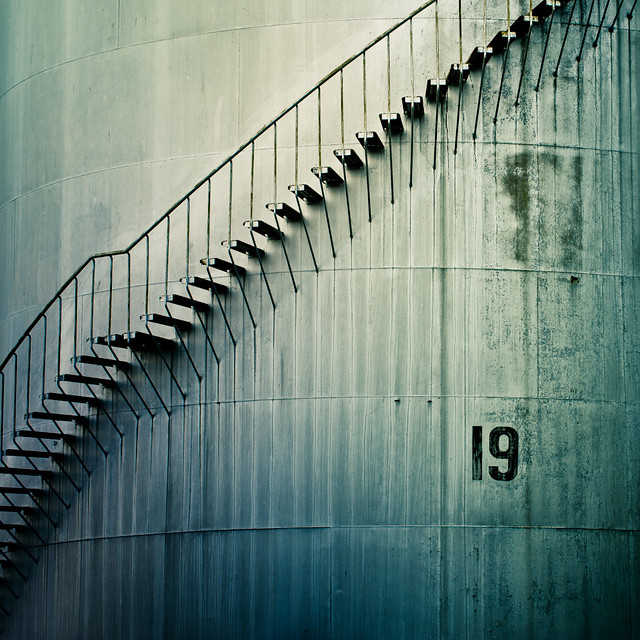



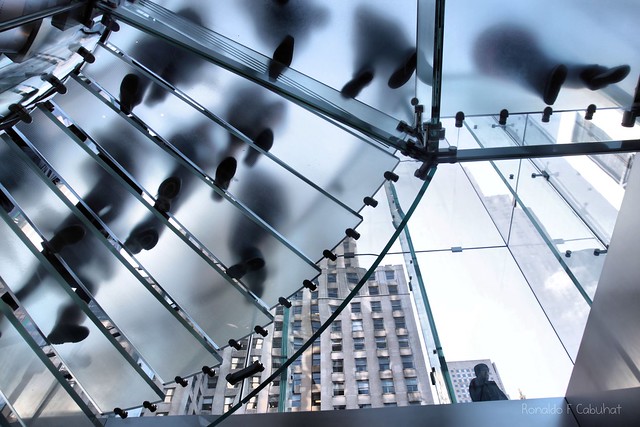





































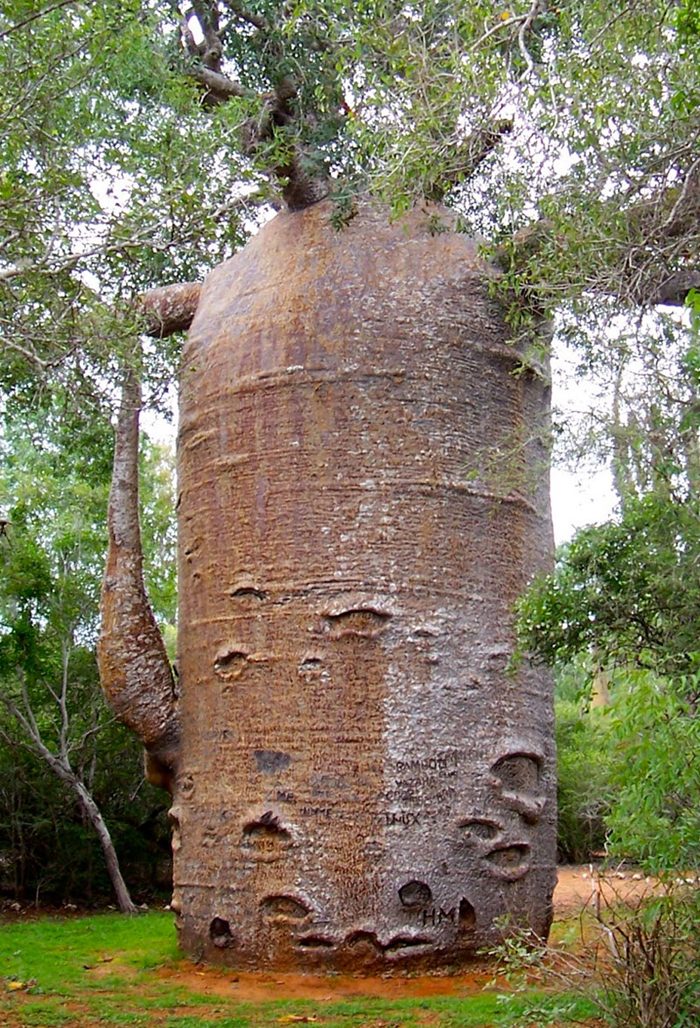

























































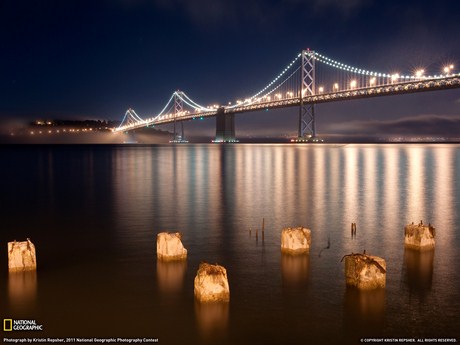

























.jpg)





































